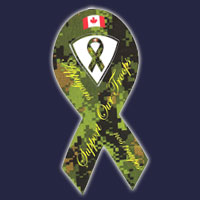Matthew Fisher,
CanWest News ServicePublished: Tuesday, September 25, 2007
KANDAHAR -- A cattle rancher's son from Nanton, Alta., has become the latest Canadian to die in the dusty, volatile sweep of land to the west of Kandahar City that has become the main battle ground against the Taliban in this southern province.
Cpl. Nathan Hornburg, a 24-year-old mechanic with the King's Own Calgary Regiment, died when he was struck by fragments from a mortar fired by insurgents just before sundown Monday near a cluster of villages known as Zangabad in the Panjwaii district. He had dismounted from his Leopard tank to fix a tread that had come off the vehicle in what was described as very rough terrain.
Brig.-Gen. Guy Laroche, the Canadian commander, expressed his "sincere condolences" to the fallen soldier's family. "There is no way to comfort his family, friends and comrades today except to say that Cpl. Hornburg believed in the mission he was involved in," Laroche said.
Another soldier, a reservist attached to a squadron of the Edmonton-based Lord Strathcona's Horse squadron, was wounded in the same skirmish as Hornburg. Three other infantrymen, based in Quebec, were then wounded by rocket-propelled grenades when they engaged the insurgents who had fired at Hornburg as they tried to carry him away from the fighting. These soldiers were "doing well" and did not have life-threatening injuries, Laroche said.
On Tuesday, another Canadian soldier was seriously wounded in a Taliban ambush. The soldier, whose name was not released, was part of a joint patrol of Canadian army and Afghan police officers. The daylight attack, 42 kilometres west of Kandahar City, involved rocket-propelled grenades and small arms fire. The soldier, a member of a Police Operational Mentor Liaison, was airlifted to a British military hospital at Camp Bastien in Helmand province for specialist care.
Hornburg was the first Canadian to have died in ground combat in Afghanistan since last October. Much more common are deaths by improvised explosive devices embedded in the road or by suicide bombers. More than half of the 71 Canadian soldiers who have now died in Afghanistan since 2002 have been killed in Panjwaii or the neighbouring district of Zhari.
On Monday, a battle group from Quebec's Royal 22nd Regiment, often referred to as the Van Doo, and tanks from the Strathconas, were conducting a daylong sweep dubbed Operation Sadiq Sarbaaz (Good Soldier) "to increase security in northern Panjwaii" and to establish a police station, Laroche said. The Van Doo reported several firefights during a long day of contact between the warring parties.
The fatal confrontation began close to the southern shore of the almost dry Arghandab River, about 47 kilometres west of Kandahar City. A Canadian army spokesman confirmed insurgents had also been killed during the exchanges, which involved small arms, rocket-propelled grenades and mortars. But, in line with Canadian and NATO policy, the spokesman declined further details on enemy casualties.
Although responsible for the entire province of Kandahar, Canadians have spent most of their time over the past two years trying to wrest control of Panjwaii and Zhari districts from the Taliban.
Panjwaii and Zhari are a warren of villages with thick mud walls surrounded by irrigated farms. There was a bumper crop of opium poppies in the area this year, but the main legal crops are wheat and grapes. The area has many grape-drying huts that have been used to hide fighters and their supplies.
A persistent haunt of the Taliban, the territory was also the scene of many battles in the 1980s between the Soviet Red Army and the mujahedeen, then backed by the U.S.
Laroche said Canada will never "definitively" dominate Panjwaii and Zhari because the insurgents are engaged in a classic counter-insurgency operation that makes them hard to locate and track.
"You have to find ways to reduce the threat and create reconstruction and development," he said. The Canadians occupied much of the two districts in the summer and fall of 2006, but eventually turned over partial control to the poorly trained Afghan police.
Several weeks ago, Canada began efforts to reestablish a greater presence in the area. Part of the initiative was to reopen abandoned checkpoints on the only main road.
The Taliban vowed to send more of its fighters into the area, Afghan sources said last week. The insurgents have seldom gathered large numbers of forces to fight the Canadians head-on since suffering heavy combat losses in Panjwaii and Zhari districts late last summer during what NATO called Operation Medusa.
Hornburg's death was the first of a Canadian in southern Afghanistan since two Valcartier, Que.,-based soldiers were killed by a roadside bomb Aug. 22. He was the 27th Canadian soldier to die in Afghanistan this year, compared to 36 last year and eight in total in the four preceding years. Canada has about 2,500 troops in Afghanistan.
Wednesday, September 26, 2007
Subscribe to:
Posts (Atom)


